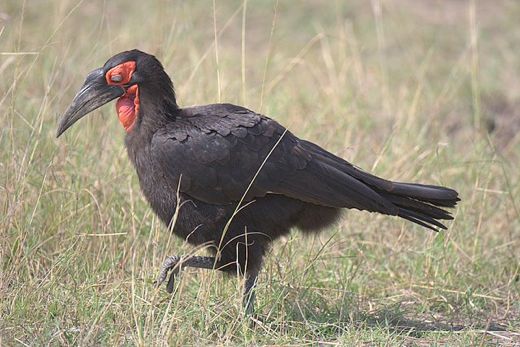Southern Ground Hornbill (Bucorvus leadbeateri) is found in parts of Kenya, Burundi, Angola, Namibia, Botswana and South Africa. This is the largest and heaviest of the hornbills. The plumage is all black with white primary feathers that are apparent only when the bird flies, and that is infrequently and only when necessary. The male has red facial skin and an inflatable bright red throat skin (above). The female has a blue patch on the red throat skin.
This hornbill is a terrestrial creature living in groups consisting of a dominant pair with accompanying offspring. These juveniles remain in the group until maturity, helping in the feeding of nestlings. The group defends their patch of territory in the African savanna, although they may wander into grasslands adjoining patches of forests.
It is carnivorous by nature, catching small animals such as frogs, snakes, lizards, rats, hares, squirrels and tortoises. They also eat arthropods like grasshoppers, beetles, scorpions and termites. Small food items are picked with precision while larger animals are killed by the pickaxe action of the bill that has the power to crush bones and skulls.
Winston Loong
Singapore
October 2008










One Response